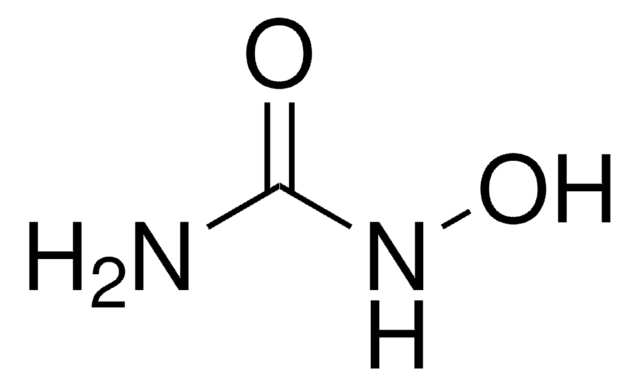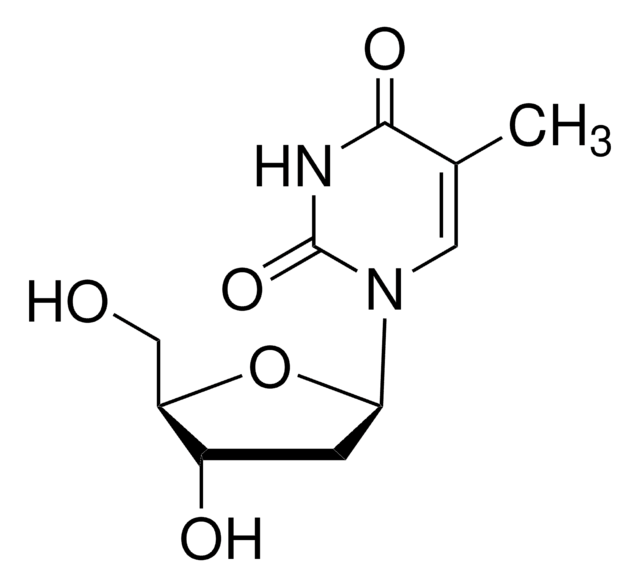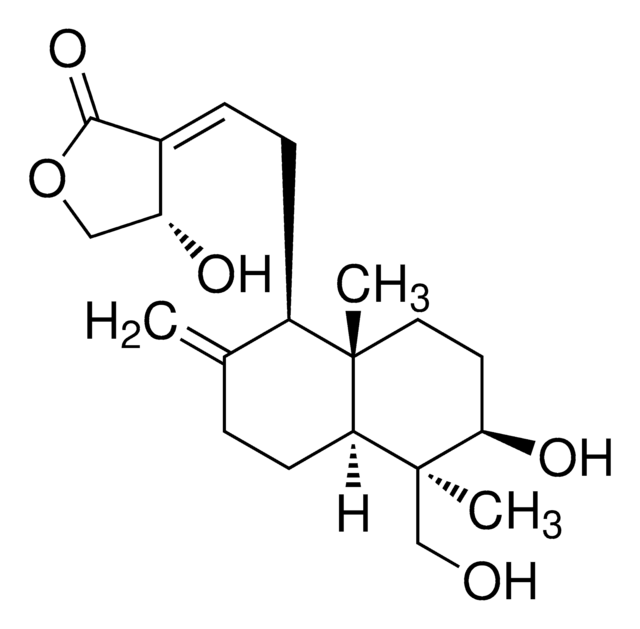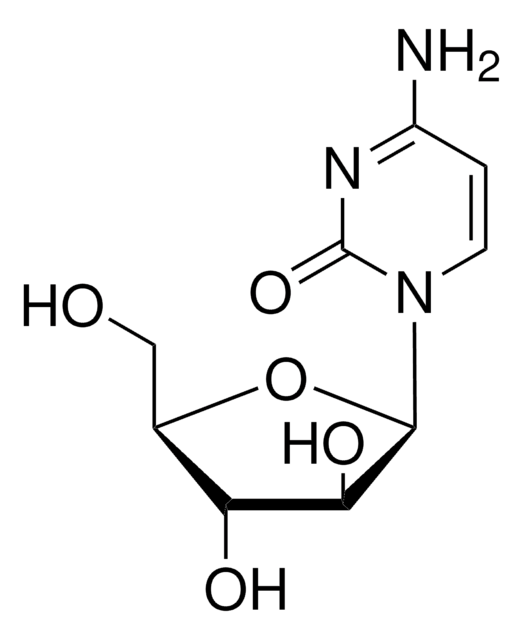178273
Aphidicolin
≥98% (HPLC), solid, DNA polymerase α and δ inhibitor, Calbiochem
Synonym(s):
Aphidicolin
About This Item
Recommended Products
Product Name
Aphidicolin, Aphidicolin, CAS 38966-21-1, is a cell-permeable antibiotic that acts as a cell synchronization agent. Blocks the cell cycle at early S-phase.
Quality Level
description
Merck USA index - 14, 727
Assay
≥98% (HPLC)
form
solid
manufacturer/tradename
Calbiochem®
storage condition
OK to freeze
color
white
solubility
DMSO: 50 mg/mL
ethanol: soluble
methanol: soluble
shipped in
ambient
storage temp.
2-8°C
SMILES string
O[C@]1([C@H]2C[C@@]3([C@@]4([C@H]([C@@]([C@@H](CC4)O)(CO)C)CC[C@H]3C2)C)CC1)CO
InChI
1S/C20H34O4/c1-17(11-21)15-4-3-13-9-14-10-19(13,7-8-20(14,24)12-22)18(15,2)6-5-16(17)23/h13-16,21-24H,3-12H2,1-2H3/t13-,14+,15-,16+,17-,18-,19-,20-/m0/s1
InChI key
NOFOAYPPHIUXJR-APNQCZIXSA-N
General description
Biochem/physiol Actions
DNA polymerase α, DNA polymerase δ
Warning
Reconstitution
Other Notes
Poluha, W., et al. 1995. Oncogene 10, 185.
Urbani, L., et al. 1995. Exp. Cell Res. 219, 159.
Schimke, R.T., et al. 1994. Philos. Trans. R. Soc. London. B. Biol. Sci.345, 311.
Kuwakado, K., et al. 1993. Biochem. Pharmacol. 46, 1909.
Hubermann, J.A. 1981. Cell23, 647.
Legal Information
Storage Class Code
11 - Combustible Solids
WGK
WGK 3
Flash Point(F)
Not applicable
Flash Point(C)
Not applicable
Certificates of Analysis (COA)
Search for Certificates of Analysis (COA) by entering the products Lot/Batch Number. Lot and Batch Numbers can be found on a product’s label following the words ‘Lot’ or ‘Batch’.
Already Own This Product?
Find documentation for the products that you have recently purchased in the Document Library.
Customers Also Viewed
Our team of scientists has experience in all areas of research including Life Science, Material Science, Chemical Synthesis, Chromatography, Analytical and many others.
Contact Technical Service











